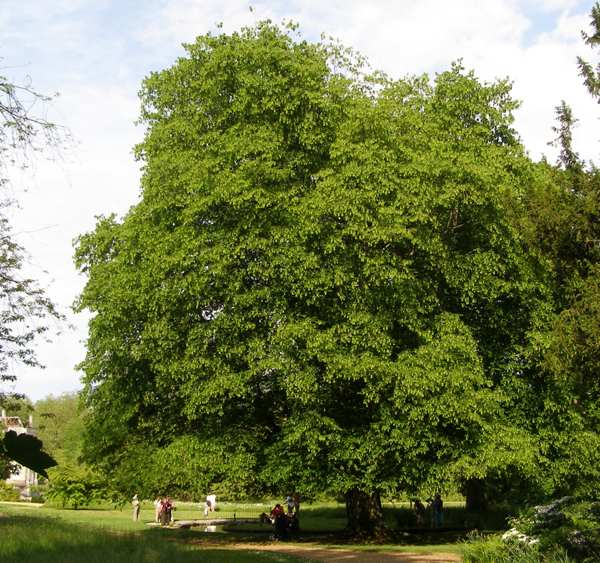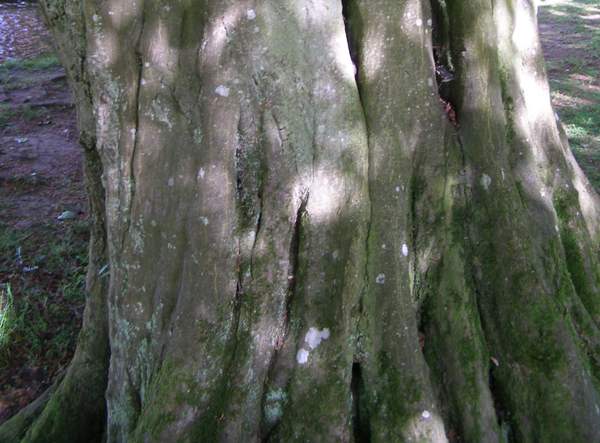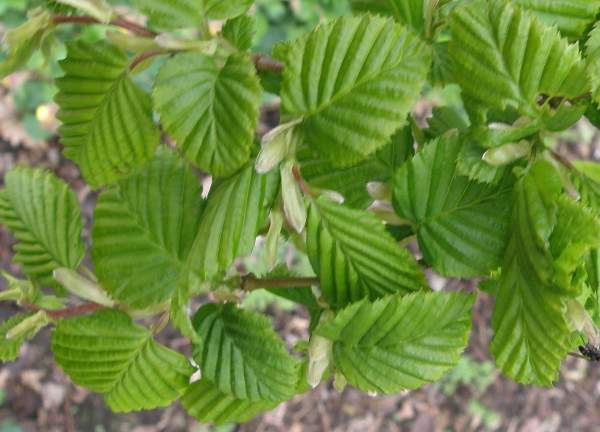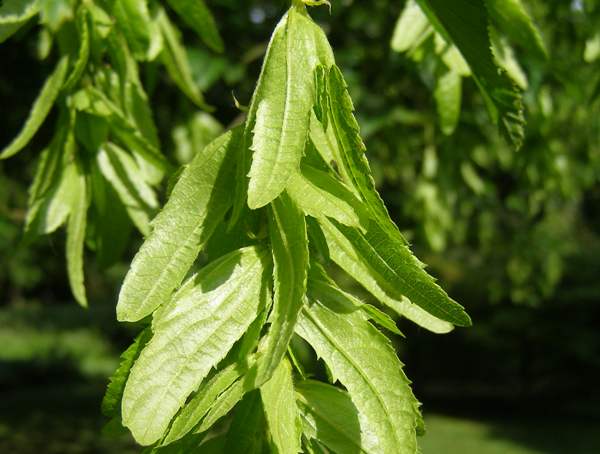Trees Birds Mammals Fish Amphibians Reptiles
Wild Algarve
Bookshop
Carpinus betulus - European Hornbeam
Phylum: Magnoliophyta - Class: Magnoliopsida - Order: Sapindales - Family: Betulaceae

Hornbeams, native to south-east England and introduced elsewhere in the British Isles, provide very hard timber - so hard that it has acquired the common name ironwood. Timber from Hornbeams was the traditional raw material for making wooden-axled cartwheels and gears in early machinery.
At a glance very similar to the (much more common in most parts of Britain and Ireland) Beech trees, Fagus sylvatica, with which they are frequently confused, Hornbeams are easily overlooked; their leaves are rather smaller and more deeply furrowed between the veins compared with Beech leaves, but otherwise they are of similar shape and colour.
The main picture shows an ancient hornbeam at Mottisfont Abbey, in Hampshire. Mature hornbeams have fluted trunks (below) whereas beeches are smooth and much more regular

The most obvious distinction between hornbeans and beeches becomes immediately apparent when the seeds appear. Hornbeam seeds have wings and rely on the wind to distribute them far from their parent tree, whereas those of beech trees do not have wings but instead their outer cases (commonly known as beech mast) have spines that get entangled in the fur of animals, thereby ensuring that at least some of the seeds are carried far from their place of origin.
In the south-east of England European Hornbeam is a popular hedging bush, because it produces a dense tangle of branches when trimmed regularly; also, like beeches, hornbeam hedges tend to hold on to their dead leaves during wintertime.
Many fine hornbeam hedges can be seen at RHS Wisley, for example.

Deeply-furrowed leaves of a Hornbeam
The leaves are much more furrowed than those of beech trees. The leaves pictured here were photographed in springtime; they become darker as summer takes over from spring.

Winged seeds of Carpinus betulus
The wings that will carry the seeds of the European Hornbeam appear in springtime, and the seeds fatten later.
Fungi associated with Hornbeam trees
Hornbeams have many ectomycorrhizal (EM) fungal partners, including Cortinarius, Russula and Lactarius fungi - webcaps, brittlegills and milkcaps as they are commonly called. The rare bolete Strobilomyces strobilaceus, sometimes referred to as Old Man of the Woods, is another of the EM partners occasionally found beneath the spreading branches of old Hornbeams.